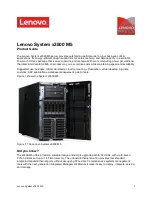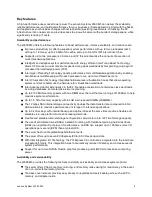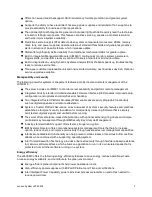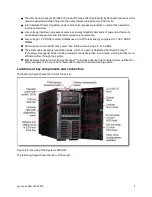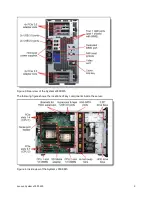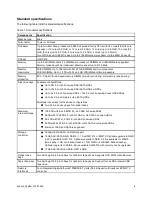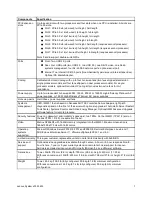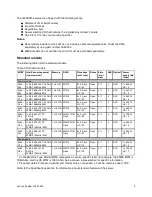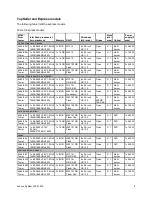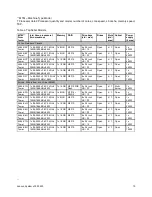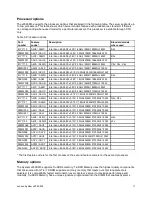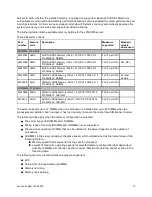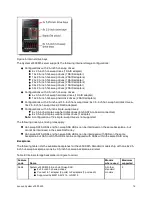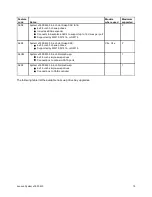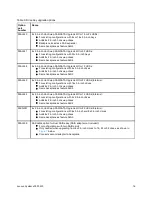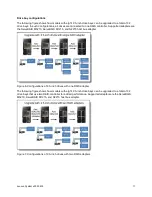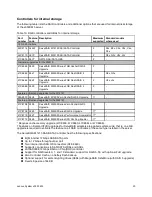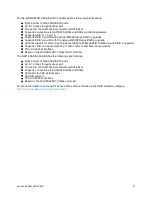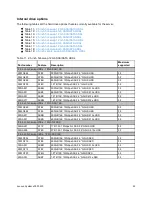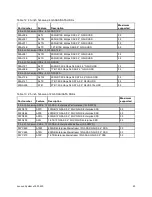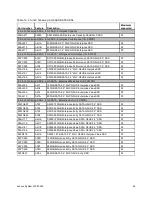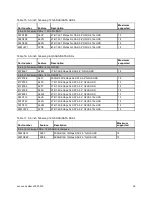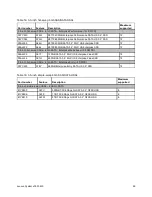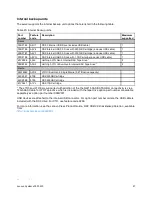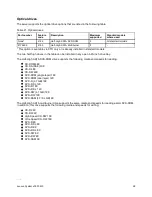
Chipkill works only in independent channel mode (the default is operational mode) and supports only x4-
based memory DIMMs.
If memory mirroring is used, DIMMs must be installed in pairs (a minimum of one pair per each processor).
Both DIMMs in a pair must be identical in type and size.
If memory rank sparing is used, a minimum of one quad-rank LRDIMM or two single-rank or dual-rank
RDIMMs must be installed per populated channel (the DIMMs do not need to be identical). In rank sparing
mode, one rank of a DIMM in each populated channel is reserved as spare memory. The size of a rank
varies, depending on the DIMMs installed.
Chipkill, memory mirroring, and memory rank sparing modes are mutually exclusive. Only one operational
memory mode can be enabled on a server, and it is a system-wide setting.
The following table shows the characteristics of the supported DIMMs. Tables cells that are highlighted
with a gray background indicate when the number of DIMMs per channel still allows the DIMMs to operate
at a rated speed.
Table 7. Maximum memory speeds
DIMM specification
RDIMM
LRDIMM
Rank
Single rank
Dual rank
Quad rank
Part numbers
46W0784 (4 GB)
46W0788 (8 GB)
46W0792 (8 GB)
46W0796 (16 GB)
95Y4808 (32 GB)
46W0800 (32 GB)
95Y4812 (64 GB)
Rated speed
2133 MHz
2133 MHz
2133 MHz
2133 MHz
Rated voltage
1.2 V
1.2 V
1.2 V
1.2 V
Maximum quantity supported*
24
24
24
24
Maximum DIMM capacity
8 GB
8 GB
16 GB
64 GB
Maximum memory capacity
192 GB
192 GB
384 GB
1.5 TB
Maximum memory at rated speed
64 GB
64 GB
256 GB
512 GB
Maximum operating speed
1 DIMM per channel
2133 MHz
2133 MHz
2133 MHz
2133 MHz
2 DIMMs per channel
2133 MHz
2133 MHz
2133 MHz
2133 MHz
3 DIMMs per channel
1600 MHz
1600 MHz
1600 MHz
1866 MHz
* The maximum quantity that is supported is shown for two processors installed.
Internal storage
The internal drive bays of the x3500 M5 are shown in the following figure.
Lenovo System x3500 M5
13

